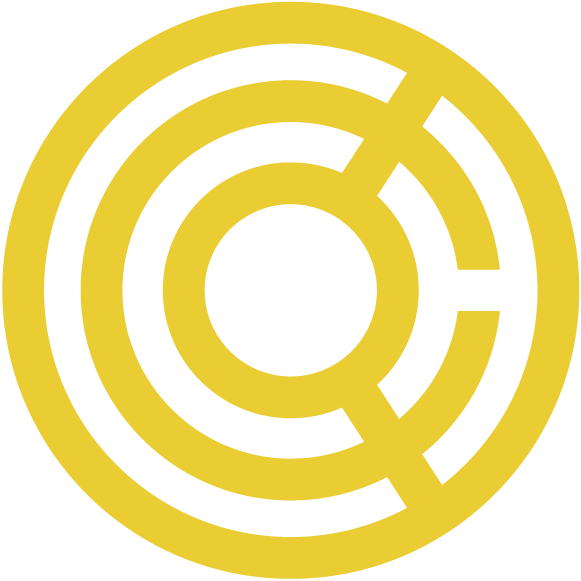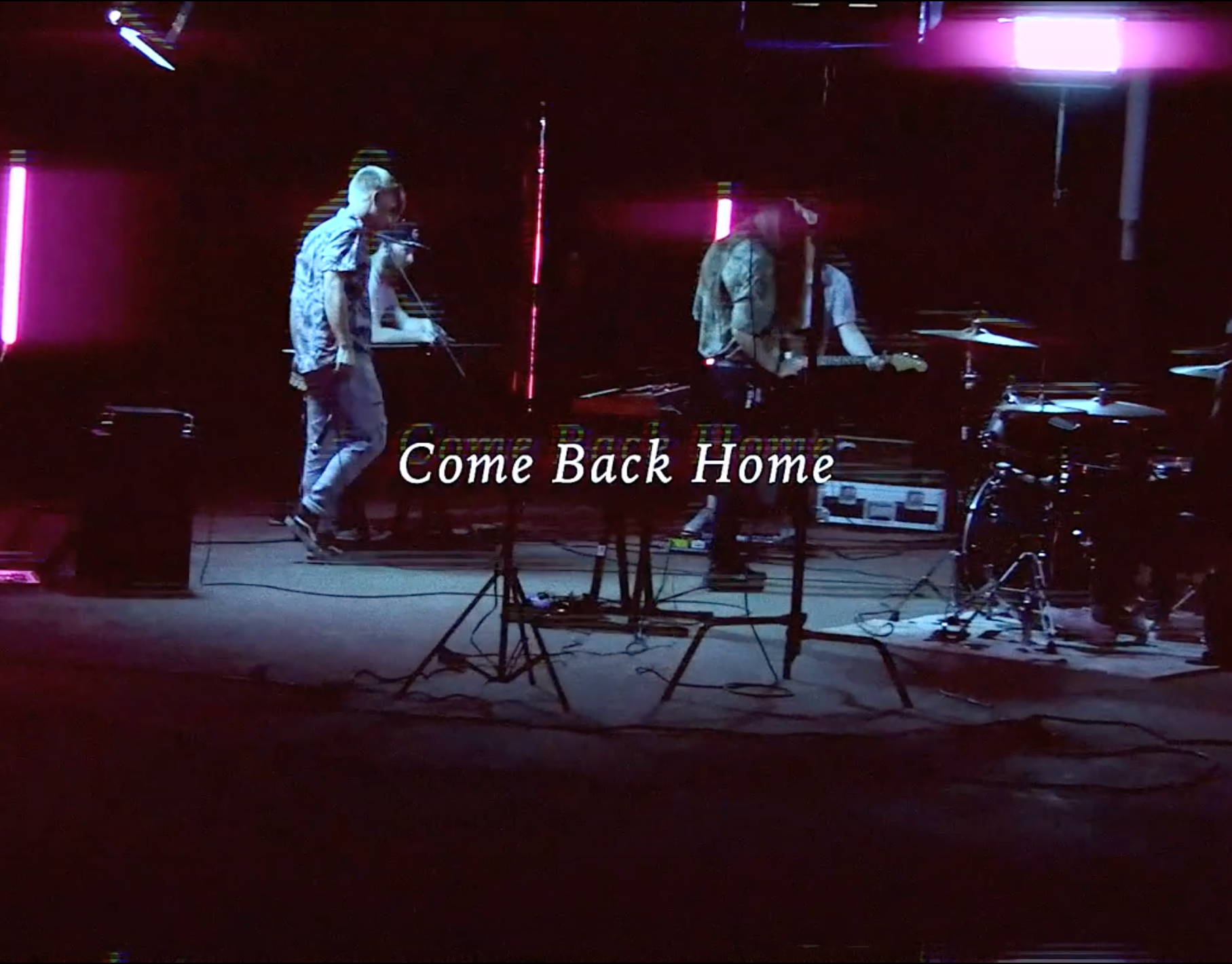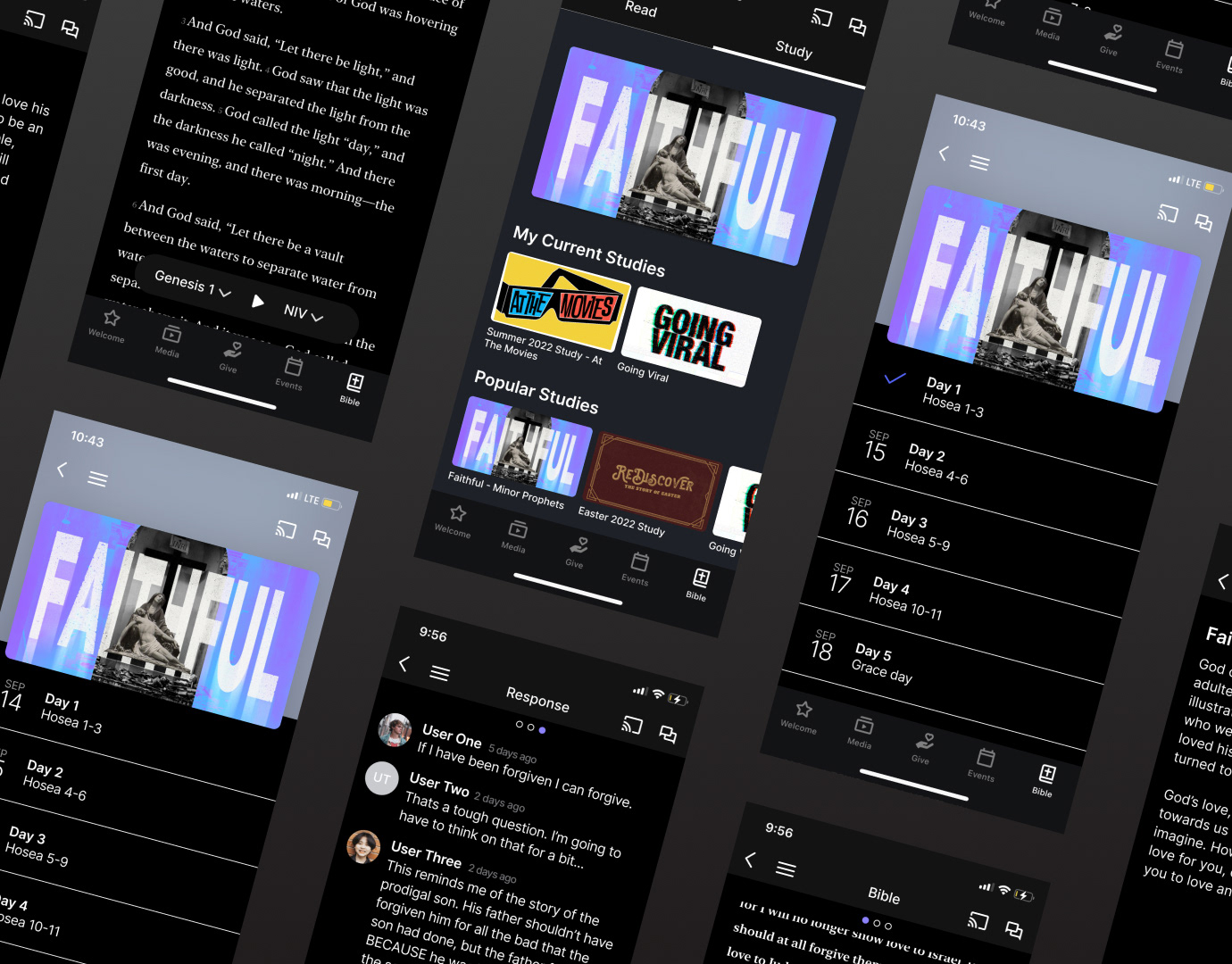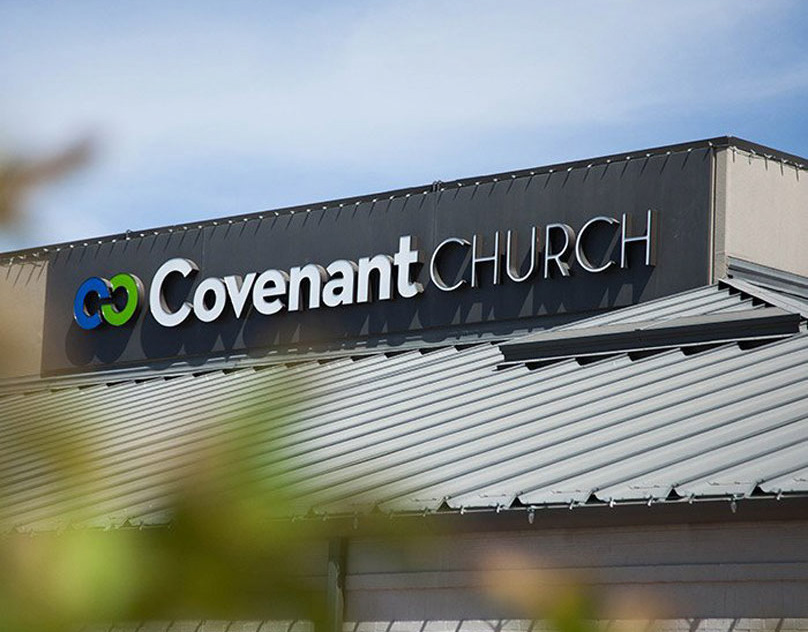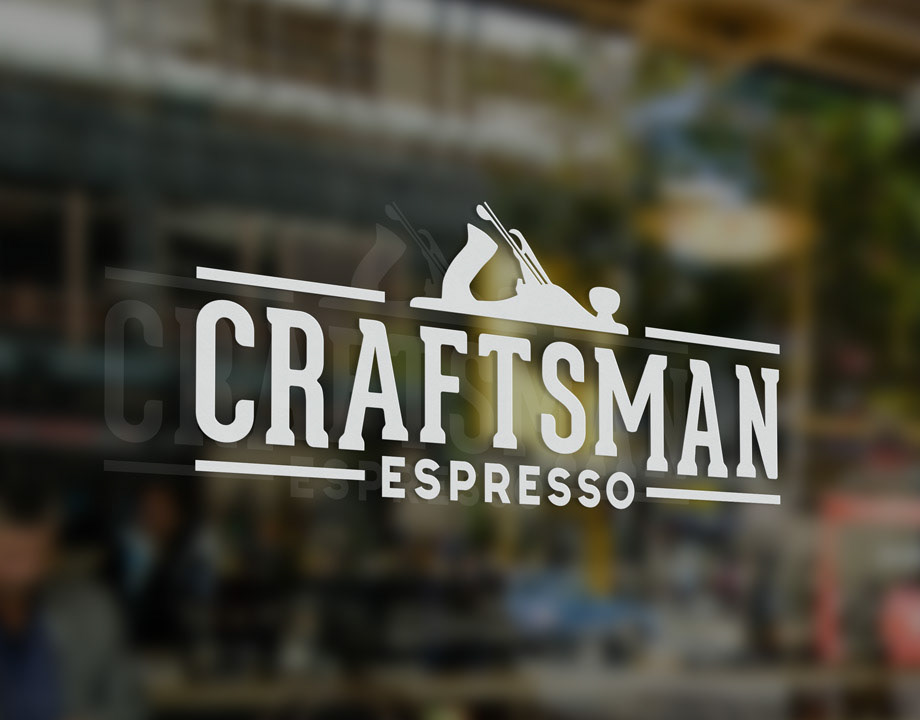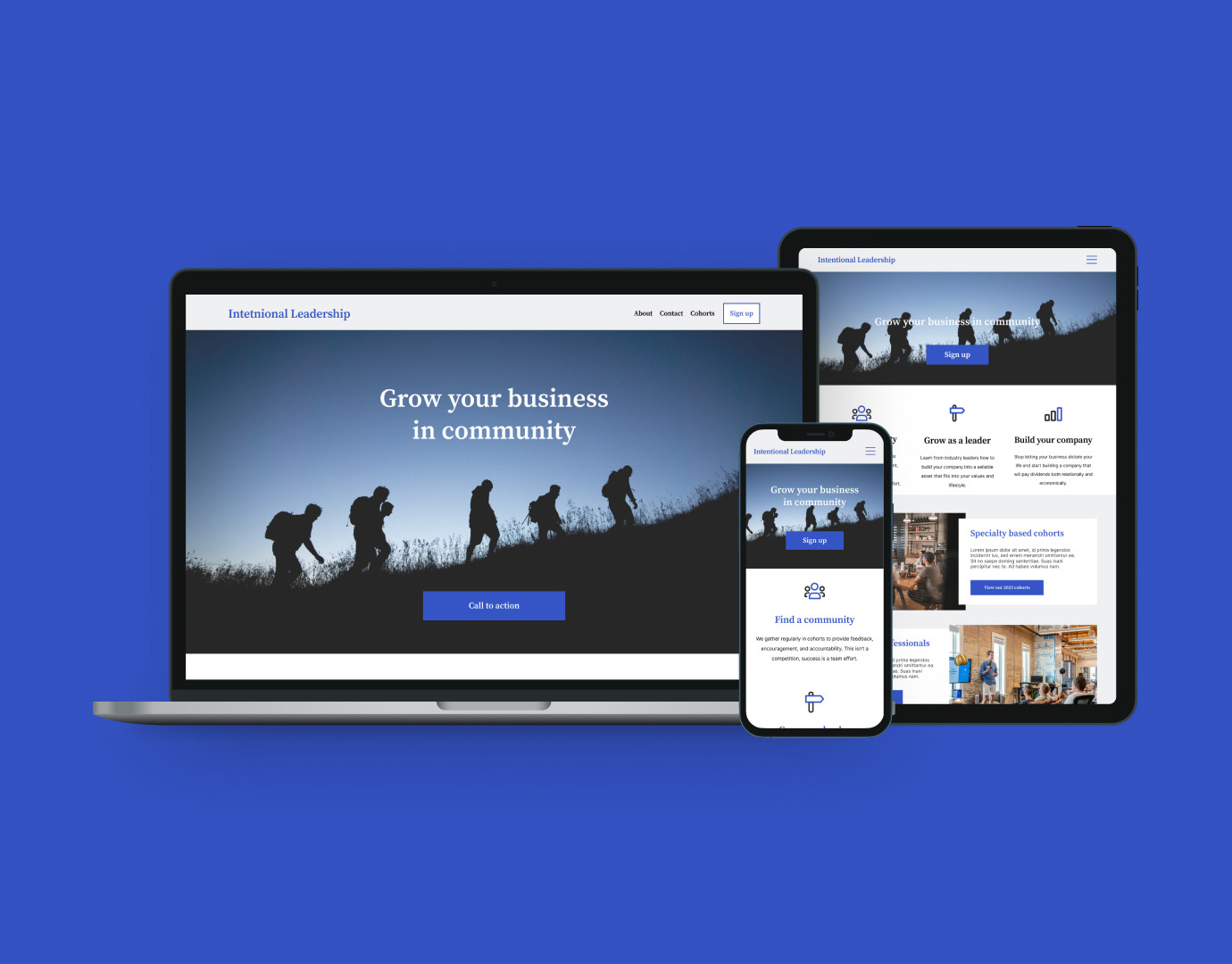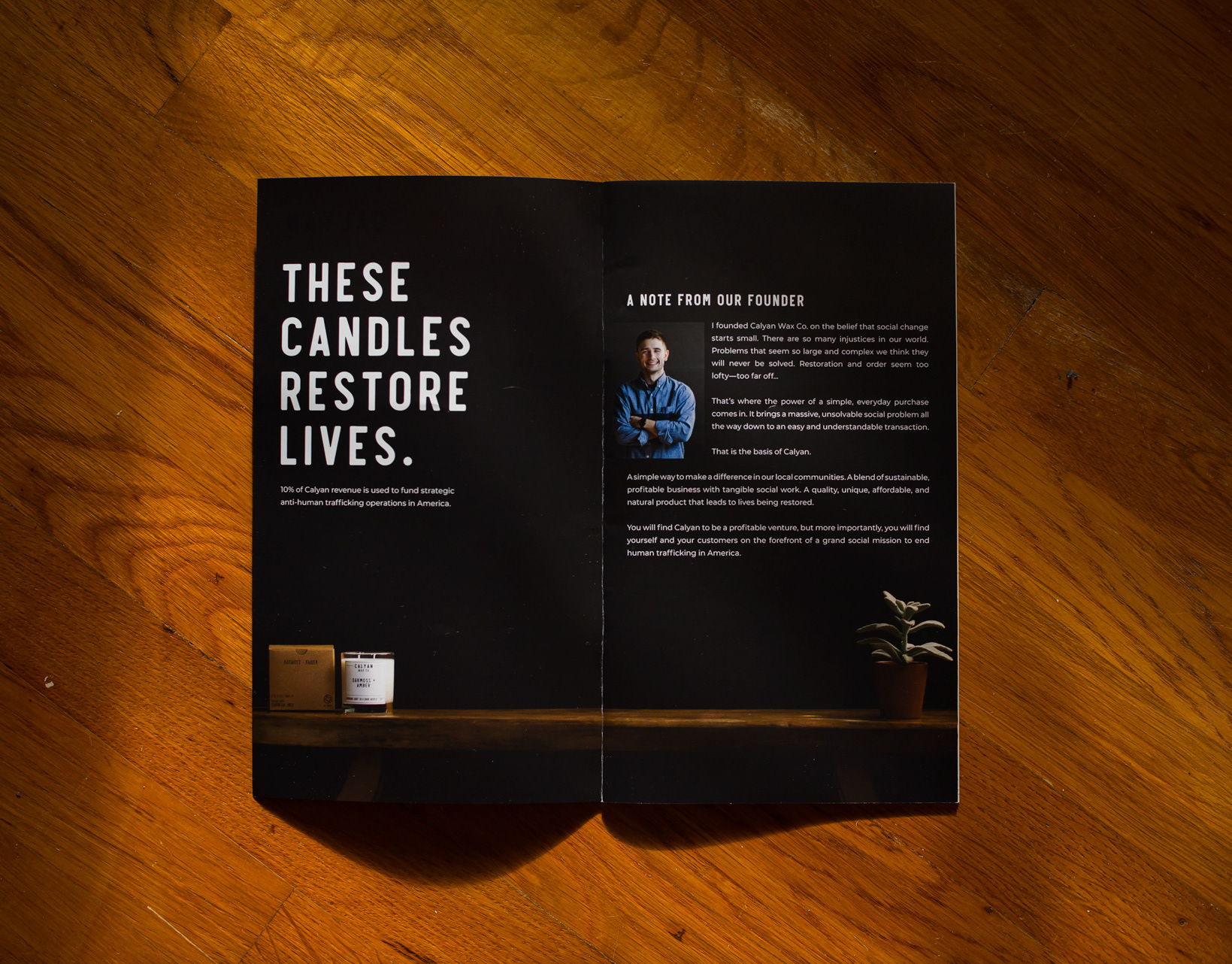The Challenge
Coffee enthusiasts are frustrated by the lack of dedicated tools to find specialty or craft coffee shops while they are outside of their normal environments.
The Opportunity
Although finding craft coffee shops was a primary motivation of the user, the coffee couldn't come at the expense of the experience of said coffee. Users wanted more out of an app than a simple locator, they wanted to be connected to high quality experiences based around their coffee.
The Result
A craft coffee shop locator app that leverages user data to share experiences at coffee shops so that other users have better data to go off of when searching for their ideal coffee experience.
Tools: Figma, Adobe Illustrator, maze.co, Google Workspace, Miro.com
Scope: End to End mobile application, created as a educational project during DesignLab's UX Academy
Roles: Product Design, UX Research, Visual Design
Empathize with the user
Research Objectives
Originally my hypothesis was that users want to solve the problem of finding good coffee. I sought out to research coffee enthusiasts experiences while searching for coffee, specifically:
1. Understand how people are currently finding coffee shops
2. Determine what people look for in a coffee shop
3. Understand how the process of finding a coffee shop affects the experience of it
4. Learn what are triggering events in the process
2. Determine what people look for in a coffee shop
3. Understand how the process of finding a coffee shop affects the experience of it
4. Learn what are triggering events in the process
Comparative Analysis
While café locator apps are abundant while searching, few, if any, are really useful in a real world experience. I compared the two apps that I knew of and the two alternative methods of finding coffee shops based on their histories, strengths and weaknesses specific to the task of finding craft coffee shops.
Survey
Next I wanted to gather more data on users and their coffee searching habits, their methods, and their satisfaction level with their current methods. Then I asked about their previous positive experiences finding coffee shops while traveling.
I received 18 respondents to the survey – when sent out through social media channels – from self described "coffee nerd" of various levels. The overall satisfaction rate with current methods (see chart below) is 62% and not a single one said they used a coffee specific app to find coffee shops. Interestingly, coffee seemed to be the primary consideration, but not the only one; respondents valued availability of seating in a coffee shop and a category titled “vibes” just as important as coffee when considering a potential coffee shop to visit. One quote from a respondent typified this sentiment: “Coffee is important to me, but the environment and attention to craft is a determining factor.”
User Interviews
I interviewed 4 people about their experiences, frustrations, and motivations when looking for coffee shops. All 4 were in their 30’s and 3 of the 4 have 5+ years of experience working in the specialty coffee industry.
I asked them about recent experiences finding coffee while traveling, how they approach coffee when planning to travel, as well as general expectations and delightful experiences at coffee shops.
For all 4 interviewees coffee held specific places in both previous travel and future travel plans. Each had their own method for finding potential coffee shops, and mixed confidence in those methods. One interviewee actually used the Source app, they were the only person I’ve met that knew of that app.
Overall I was surprised how little we talked about coffee. There were so many other concerns surrounding their coffee drink that affected their experiences. Primarily the environment, navigation considerations (especially while traveling), amenities at the shop, and aesthetics of the coffee shop itself. Good coffee was always a non-negotiable, but it seemed to be only the starting consideration.
Key Takeaways
• Users want to be able to find good coffee, but coffee can not come at the expense of other considerations like aesthetics of the shop, staff kindness, and other shop amenities.
• Users are relatively unhappy with their current methods of finding craft coffee (specifically google maps, social media, yelp word-of-mouth, etc.) because of their unreliability.
• Users use multiple variables while searching, not just coffee. i.e. quality and quantity of reviews, photos, social media presence, equipment in the shop, quality of ingredients, etc.
• Overall, users want to find good experiences centered on craft coffee.
How might we reliably connect coffee enthusiasts with delightful coffee shop experiences while they’re exploring unfamiliar locations?
Define the problem
Affinity Map
Following my research, I gathered various quotes, observations, and summarizations from my survey and interviews and added them to a board in Miro. After some sorting some patterns started to appear. I noticed that the observations separated into “current” and “potential” categories. From there they broke down into more specific details of “Current Practices” and “Wants.”
The wants generally were more than just “good coffee.” They were about the environment, the aesthetic, the service, the parking, the vibe. This helped me understand my research findings that users want more than just good coffee.
User Persona
Thus enters Amy, the personification of my research. Amy is a young coffee professional who wants to experience the best of what the coffee industry has to offer, but she struggles to sift through all the dead ends on Yelp, Google Maps, and social media platforms to find cafes that are equally committed to specialty coffee.
Product Roadmap
The project roadmap is what changed the most in regards to my research. The cafe locator was still the primary function, but the supporting information was gathered and presented had to change to solve Amy’s problem. Originally I had the “Check in” feature as a “nice to have” but I moved it to a “must have.”
User Flow
The primary user flow also had to change. In order for users to rely on previous user’s testimonials, I needed to have current users provide that information. Thus the emphasis on the “check in” in the main user flow.
Site Map
To accommodate for this emphasis on the “check in” I also put together a site map to think through the information architecture of the app. This helped me visually organize the pages in the app’s flow.
Ideate potential solutions
Sketches
My sketches were based on the pages in the Information Architecture and User Flow in the define stage. The top screens that needed to be well thought out were the home/map page, the cafe card, and the check in.
Branding
Ever since I came up with the concept for a craft coffee shop finding app, the name “Found Coffee” felt like the epitome of the solved user problem. I ran with that idea to build out a full brand.
Hi-fi Mockup
Next I moved the sketches into Figma and started creating a hi-fi wireframe and mock up. Taking care to account fo the variable nature of different data points – like coffee shop or city names. I knew I wanted to highlight images of the shops themself as a majority of my research said users want to see photos of the shop when making their decisions.
The check in flow was a fun challenge; how to take what is basically a form and make it easy, delightful, but still useful to collect important information so future users could leverage previous check ins.
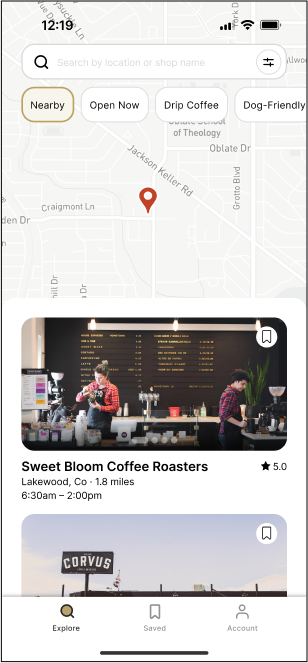
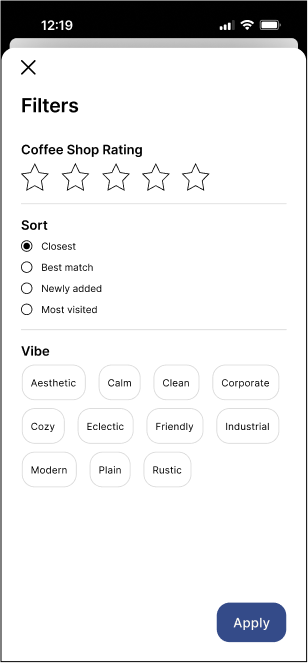


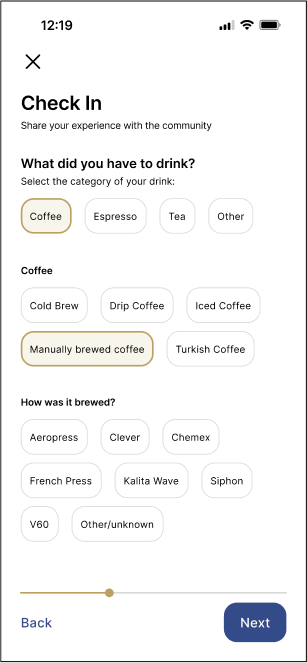
Test to improve
User Tests
To test the prototype, I leveraged maze.co and set up a test with 2 prototype tests and 4 follow up questions. I had 10 individuals go through the test unmoderated on their own computers.
The first test was for users to locate a specific coffee shop after searching by a city’s name. All 10 users finished the test successfully, with strikingly few mis-clicks. Overall that flow was rated a 6.3 out of 7, with 7 being “very easy.”
The next test asked users to go through the “check in” flow. I specifically instructed testers to check in, give the shop a 5 star rating for their “great drinks” and “chill vibe.” They were also to report having a cappuccino, add a note, and upload photos to complete their check in. All of the steps went well except one in particular.
The organization of drinks into sub categories “Coffee,” “Espresso,” “Tea,” and “Other” confused even seasoned coffee professionals. 9 out of 10 chose “coffee” as the category for a cappuccino even though it is made with espresso. This resulted in frustration to the point that 5 out of the 10 testers mentioned the confusion when asked how their experience was.
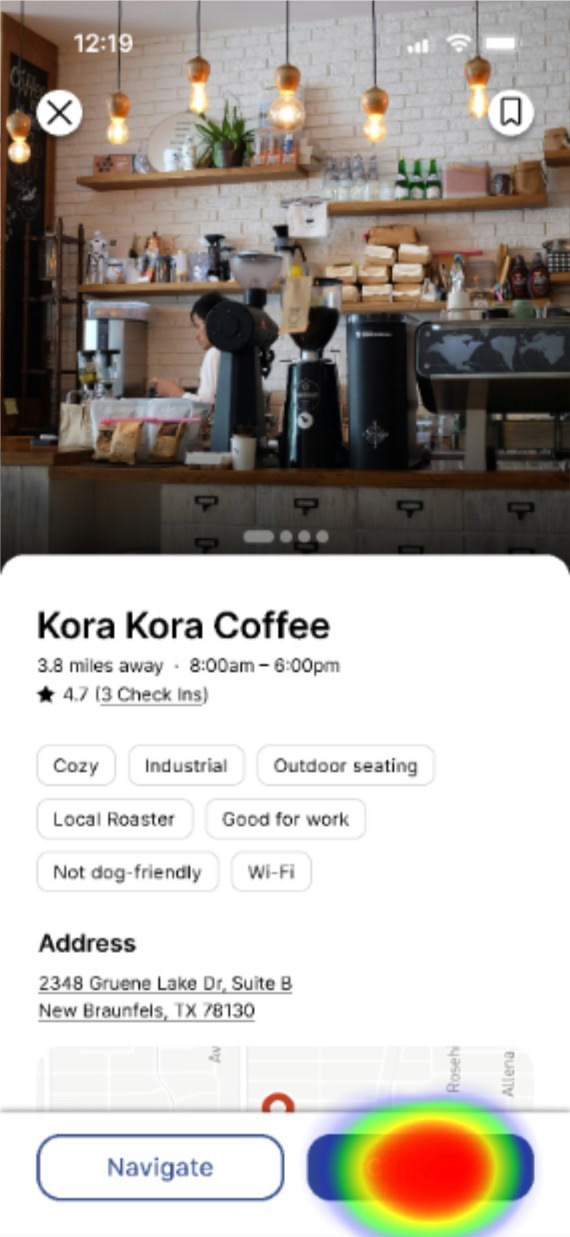
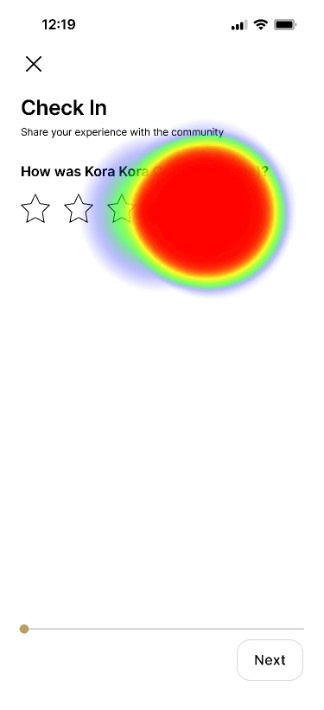
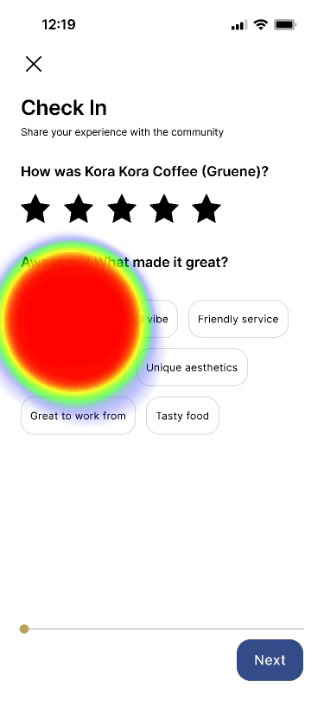


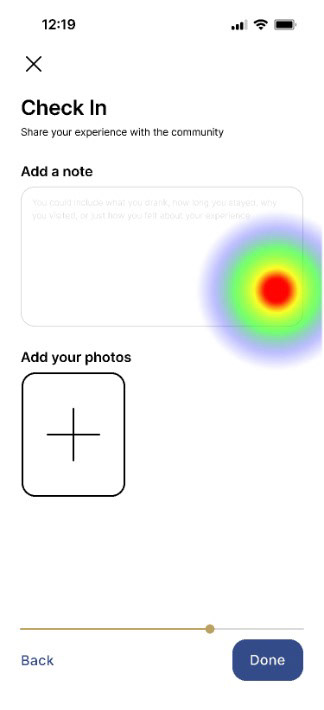
Iterate to excellence
Iteration
There are several iterations that could be made as a result of the user test. But the primary user pain point that needed to be resolved was the issue of the confusing coffee check in screen. The problem seemed to come in the presentation of the drinks, categorized by how they're made. I assumed that would be obvious to coffee enthusiasts, but I was wrong.
This provided an opportunity to not only bring clarity to the check in process, but also narrow the focus of the app to coffee by removing the “tea” and “other” categories. Without those two superfluous options, I was able to present the Coffee and Espresso options on one screen. Since the drink categories are exclusive, that also allowed for any follow up questions.
This solution remains to be tested, but it is my assumption that the users would be able to move through the check in process even easier while collecting better data about their experience.
Conclusion
To use the term coined by World Barista Champion and Coffee Entrepreneur, James Hoffman; I am a “nerdy coffee person.” So to design the Found Coffee app was a passion project indeed. Getting to solve for other nerdy coffee people’s pain points and frustration with the juggling act that is involved in trying to locate a coffee shop in a new town was exciting. Getting to dig deeper into that frustration to find the real motivation beyond the coffee gave me a greater appreciation for my daily coffee ritual.
If I were moving forward with this app I would love to test my iteration, but also get user feedback on the options presented to them through the check in process; do they order other coffees than what is shown? Are there differing reasons why someone would give 5 stars vs 4 stars? What other information do users want to see in others’ Check Ins when they are evaluating a potential coffee shop? There are many questions left unanswered.
Another feature that I would also explore would be the ability to create a “feed” of other user’s check ins, so you could follow other coffee enthusiasts, ultimately making connections and building community within the coffee community.

